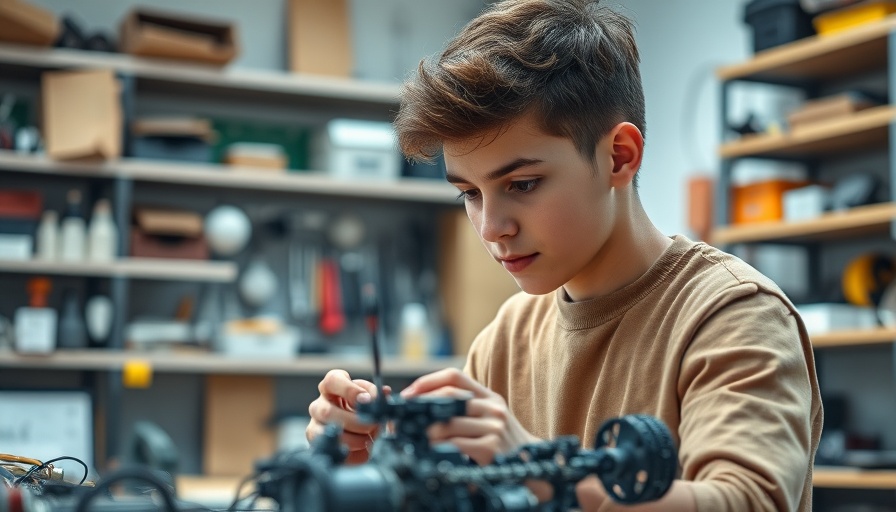
Introducing a Visionary: The Birth of Intempus
At only 19, Teddy Warner embodies the spirit of innovation and the boldness required to challenge the status quo. With a background that spans fabrication labs, academia in California, and research at a leading AI program, Warner has drawn upon his diverse experiences to found Intempus. The startup aims to enhance the emotional capabilities of robots, addressing a critical barrier in human-robot interactions: expressiveness.
Understanding the Missing Link: Expression in Robots
Warner underscores a crucial observation: while humans process stimuli through a series of emotional responses (the intermediary 'B' step), robots typically skip this complex layer. He explains, "Robots currently go from A to C—that is observation to action. They don't have the ability to respond emotionally, which can lead to misunderstandings. If we can integrate emotional intelligence into robots, we create a smoother communication channel between humans and machines." This technological advancement holds promise for improving interactions across industries, from manufacturing to domestic settings.
The Science Behind Emotional Intelligence
The foundation of Intempus lies in rigorous research that Warner embarked upon during the company's first four months. By capturing physiological data through heart rate, body temperature, and sweating, Warner aims to correlate these changes to human emotions. This unique approach provides groundbreaking insights into how robots can mimic similar physiological reactions. If a robot encounters a challenge, it should signal its stress through movement or expressions.
A New Frontier in Robotics: Expressing Beyond Anthropomorphism
Warner's vision extends beyond humanoid robots, believing that even non-anthropomorphic designs can exhibit emotions through their movements. He asserts, “Positioning of the torso, shoulders, and arms is more important than facial expressions in conveying intent.” This insight opens the door for retrofitting existing robots—like delivery drones or industrial machines—with capabilities that allow them to express urgency or request human assistance effectively.
Future Predictions: The Implications of Emotional Robots
The implications of integrating emotional intelligence into robots are vast. In sectors like healthcare, robots equipped with emotional sensitivity could provide companionship to the elderly or assist individuals with special needs more effectively. Additionally, in customer service, robots that can detect and respond to consumer emotions could enhance user experiences, leading to increased satisfaction and loyalty.
Counterarguments and Diverse Perspectives
Critics have voiced concerns over the ethical implications of equipping robots with emotional intelligence. Could this lead to unintended manipulations of human emotions? Warner acknowledges these concerns, emphasizing the importance of responsible design. “Our goal is to create an intuitive interaction, not to deceive or manipulate,” he insists. This perspective prompts a broader discussion about the moral implications of advanced technologies and the need for ethical frameworks as they evolve.
Actionable Insights: What Can We Learn?
The ambition embodied by Warner serves as an inspiration for aspiring technologists. By combining creativity with scientific inquiry, innovators can solve real-world problems. Students or young entrepreneurs looking to dive into technology should take cues from Warner’s journey—embracing interdisciplinary experiences, being open to pivoting when necessary, and continually questioning how existing methodologies can be improved.
Conclusion: Embracing the Future of Robotics
Teddy Warner’s ambitious journey with Intempus is a testament to the innovative potential of the next generation. By delving into robots' emotional expressions, Warner is not just shaping robots but is also challenging the way we communicate with technology. To follow in Warner’s footsteps, it is essential to stay inquisitive about how technology intersects with human emotions, and explore ways to elevate our interactions with it.
 Add Row
Add Row  Add
Add 




Write A Comment